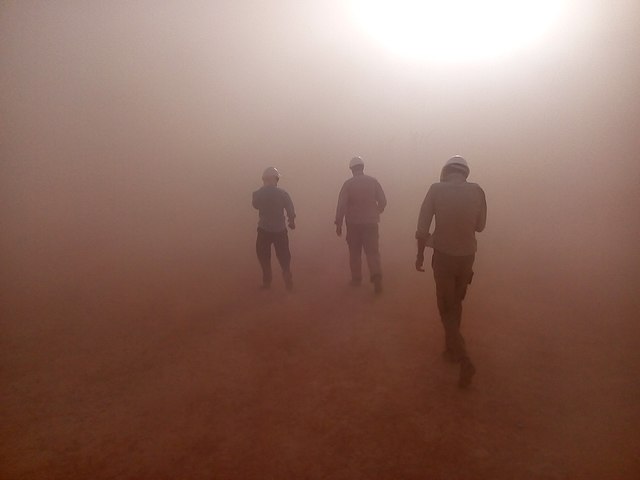Let this thought really sink in for a minute: at the current trajectory, homo sapiens will be the only dominant species/head of the food chain to have caused their own extinction in the history of the Earth.
We’re number one!?
Over the last century, mankind has polluted just about every corner of the globe in one way or another. Through our cycle of “consume, discard, repeat,” we’ve left nothing but an ecological path of carnage in our wake. This had caused a ripple effect that has claimed the lives of millions of species and their habitats. In my opinion, one of the most visible indicators of how severe climate change has escalated over the last few decades is how many major lakes worldwide have either completely dried or are coming dangerously close to doing so.
Lake Poopó, Lake Eyre, Aral Sea, Lake Mead, Lake Urmia (the largest Lake in the middle east), and the Dead Sea have all added their names to this illustrious list—in each case, the financial and ecological toll was breathtaking. And it seems we have another massive lake about to be completely eradicated in our own backyard.
Within the next five years or so, the Great Salt Lake will be no more. Scientists say it will be an “environmental nuclear bomb”—with all indicators foretelling that Colorado could be involved with the (literal) fallout. In fact, it isn’t even completely dry at this point, and it’s already throwing up red flags that say, “Get the fuck out, now.”
But first, to those naysayers that don’t believe man can impact the environment so monumentally, please keep in mind that scientists at Utah State University figured the lake’s volume is down at least 67% since pioneers once settled in the valley and humans are responsible for about three-quarters of its decline. You know … if you believed in all that science mumbo-jumbo.
And for people like myself who do believe in the mumbo-jumbo, everything is about to get a lot more deadly; all because of a little dust-up.
It’s important to know that the dust that currently comprises the dried lakebed is incredibly toxic. The US Geological Survey in 2018 and 2019 installed 18 dust traps throughout the Salt Lake City area. When they examined the dust, researchers found traces of arsenic, lead, and other toxic metals. These findings were published in the journal GeoHealth in October 2022. This stems from the fact that the lake has long been a catchment for industrial pollution. Each area of the lake has its own recipe of toxic metals and other substances, fed by different polluting industries nearby like the Kennecott copper mine. And at every site, concentrations of arsenic were enough to exceed an Environmental Protection Agency marker of concern for residential soil. One site had a concentration 35 times higher.
Kevin Perry, a University of Utah atmospheric scientist researching the Great Salt Lake dust added even more dire news. He found that during dust storms, hot spots on the lake will pop and emit swirls of dust, collecting particles less than a fraction of the width of a human hair, darkening the sky, and propelling them into communities nearby. The smallest particles can remain airborne for weeks at a time.
The term “nearby communities” seems to be used pretty liberally, given that these clouds have now found their way as far as southwestern Wyoming.
Adrian Hunolt—who ranches in southwest Wyoming on the Bear River—said, “So this valley will fill up with dust, especially in the spring when it starts blowing. It looks like smoke. And we come out in the morning and our vehicles have all got that white ash-looking stuff that blows off the Great Salt Lake on them.”
If the Great Salt Lake isn’t even completely dried up, and the toxic dust is already in Wyoming, I don’t think it’s too far a stretch of the imagination to think once the lake is completely gone, that western Colorado will be impacted. Places like Moffat, Rio Blanco, Garfield, and Mesa counties are nestled right along Utah’s eastern border, and some aren’t too terribly far from the aforementioned southwestern portion of the Cowboy State.
But it’s getting … better?
I guess the one bit of good news I can give when it comes to this grim prognosis of our ecological future here in the West comes from the fact that once they were given this information, Utah leadership did something. Governor Spencer Cox asked the people of Utah to pray, “We need more rain and we need it now. We need some divine intervention. That’s why I’m asking Utahns of all faiths to join me in a weekend of prayer June 4 through the 6th.”
That’s it.
During the Utah 2023 legislative session—which ended in March—no bills were proposed when it came to addressing the end of the Great Salt Lake; nothing, zilch, nada. So yes, every stereotype you have about Utah is probably true.
Look, I hope I’m wrong. I truly do. I hope that Colorado is far enough away from the reach of this inevitable poisonous cloud that nobody gets hurt. But I would rather be safe than sorry. We need something done by our state legislators when it comes to studying the impact that the toxic dust clouds could potentially have on those counties I mentioned previously. We need to learn from the mistakes of our divinely (mis)guided neighbors to the west and do something actionable to ensure our citizens are safe.
Because if we don’t, and shit goes south, then who can we poke fun at?


Leave a Reply
You must be logged in to post a comment.